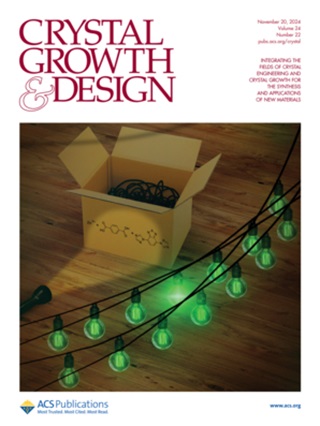操纵多晶材料的微流体途径:2,4,6,8,10,12-Hexanitro-2,4,6,8,10,12-Hexaazaisowurtzitane 的案例研究
IF 3.4
2区 化学
Q2 CHEMISTRY, MULTIDISCIPLINARY
引用次数: 0
摘要
多晶体转化至关重要,因为它极大地影响着材料的物理、化学和功能特性,对从先进材料工程到高能材料科学等领域有着深远的影响。然而,在理解转化机制、实现对转化过程的精确控制以及解决多晶体的稳定性等方面存在困难。本研究将目光投向了典型的多晶爆炸物--2,4,6,8,10,12-六硝基-2,4,6,8,10,12-六氮唑乌齐坦(CL-20),并通过微流控技术,从机理和实验两个角度创新性地着手开发多晶体转化的控制策略。我们利用分子动力学模拟,结合热力学和动力学原理,深入研究了从α型到β型,最终到ε型的微观转变机制。为了控制这些转变,开发了一种定制的同轴微混合器,从而建立了一种先进的多晶体控制微流体系统。通过仔细研究微流体条件对多晶体转变的影响,验证了这一突破性机制,促进了从α-CL-20到ε-CL-20-PBX的连续高效转变。值得注意的是,热分解测试进一步证实了 ε-CL-20-PBX 优越的储存安全性和可靠性。这些发现为了解爆炸材料的多晶体转变提供了前所未有的视角,并为操纵多晶体材料开辟了新的途径。本文章由计算机程序翻译,如有差异,请以英文原文为准。

Microfluidic Avenue to Manipulate Polycrystalline Materials: A Case Study of 2,4,6,8,10,12-Hexanitro-2,4,6,8,10,12-Hexaazaisowurtzitane
Polymorphic transformation is of paramount importance as it significantly influences the physical, chemical, and functional properties of materials, with profound implications in fields ranging from advanced materials engineering to high-energy material science. However, there is difficulty in understanding transformation mechanisms, achieving precise control over transformation processes, and addressing the stability of polymorphs. This work sets its sights on 2,4,6,8,10,12-hexanitro-2,4,6,8,10,12-hexaazaisowurtzitane (CL-20), a typical polycrystalline explosive, and innovatively embarks on the development of a control strategy for polymorphic transformation from both mechanistic and experimental perspectives by microfluidics. We delve into the microscopic transformation mechanisms from the α-form to the β-form and eventually to the ε-form, utilizing molecular dynamics simulations incorporating thermodynamic and kinetic principles. To control these transitions, a custom-engineered coaxial micromixer was developed, leading to the establishment of an advanced microfluidic system for polymorph control. The groundbreaking mechanism was validated by scrutinizing the influence of microfluidic conditions on the polymorphic transformation, facilitating a continuous and efficient transition from α-CL-20 to ε-CL-20-PBX. Notably, thermal decomposition tests provided further endorsement, confirming the superior storage safety and reliability of ε-CL-20-PBX. The findings offer an unprecedented understanding of the polymorphic transformation of explosive materials and open new avenues in the manipulation of polycrystalline materials.
求助全文
通过发布文献求助,成功后即可免费获取论文全文。
去求助
来源期刊

Crystal Growth & Design
化学-材料科学:综合
CiteScore
6.30
自引率
10.50%
发文量
650
审稿时长
1.9 months
期刊介绍:
The aim of Crystal Growth & Design is to stimulate crossfertilization of knowledge among scientists and engineers working in the fields of crystal growth, crystal engineering, and the industrial application of crystalline materials.
Crystal Growth & Design publishes theoretical and experimental studies of the physical, chemical, and biological phenomena and processes related to the design, growth, and application of crystalline materials. Synergistic approaches originating from different disciplines and technologies and integrating the fields of crystal growth, crystal engineering, intermolecular interactions, and industrial application are encouraged.
 求助内容:
求助内容: 应助结果提醒方式:
应助结果提醒方式:


